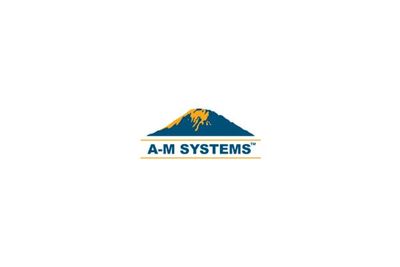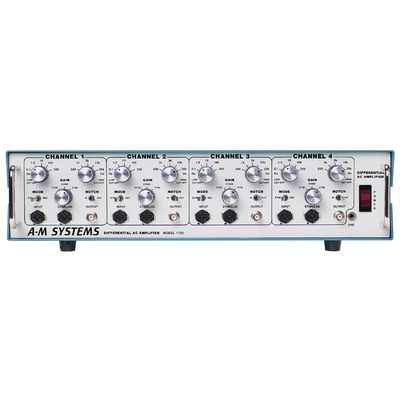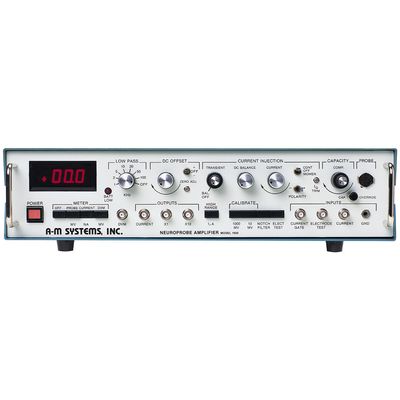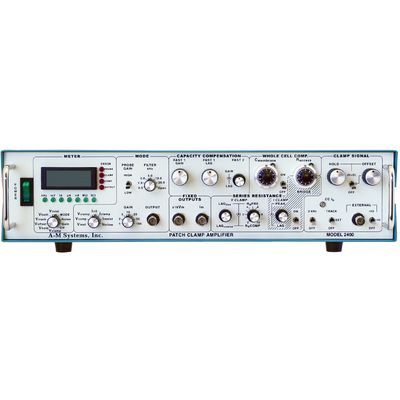

- Home
- Companies
- A-M Systems
- Products
A-M Systems products
Extracellular Amplifiers
Differential AC Amplifier
The Model 1700 Differential AC Amplifier contains 4 independent amplifier channels in a single enclosure enabling the researcher to record multiple signals simultaneously. Each channel contains a high-gain, low-noise differential stage followed by low-pass, high pass, and notch filters. A connection is also provided for a stimulator input so that recording or stimulating through the same electrode is possible without having to change cabling. Standard gain settings are x100, x1000 or x10,000, but they can be modified to meet your specific requirements. High and Low Pass filters are 2nd order Butterworth filters, and like the gain, the standard settings can be modified to meet your needs if required.
Intracellular Amplifiers
Neuroprobe Amplifier
The Neuroprobe Amplifier Model 1600: Designed to surpass the exacting requirements of intracellular neurological studies and provide the research scientist with versatility, accuracy and ease of operation. The instrument consists of a high input impedance amplifier combined with current injection and bridge balance circuitry, allowing simultaneous stimulation and recording through the same electrode. The internal Dual-Function Transient Control and the DC balance Control assure extremely precise recordings during current injection without requiring an external bridge or a differential input oscilloscope. High-resolution ten-turn potentiometers are used for the DC Offset, DC balance, Current Injection, and Capacitance Compensation controls. Measure electrode resistance and adjust capacitance compensation using the internal 100 Hz test pulse. An easy to read Digital Panel Meter produces a highly accurate display of membrane potential, injected current or electrode resistance
Patch Clamp Amplifier
Patch Clamp Amplifier
The Model 2400 is a low-noise, full-featured patch clamp amplifier designed for voltage clamping using patch electrodes on single channels or whole cells. Its design also allows fast intracellular current clamp measurements with sharp electrodes. Amplifier current gain can be matched to your experimental needs by selecting one of the three available dual resistive feedback probes, as the gain is partially determined by the value of the resistor in the headstage. There are three heastages to choose from: 1 G?/10 M?, 10 G?/10 M?, and 10 G?/100 M?. The wide range of feedback resistors means currents can be recorded with outputs of 1 mV/nA to 10 mV/fA. The standard probe sent with each unit is the 100 M>?/10 G>? version, but other values can be selected.



